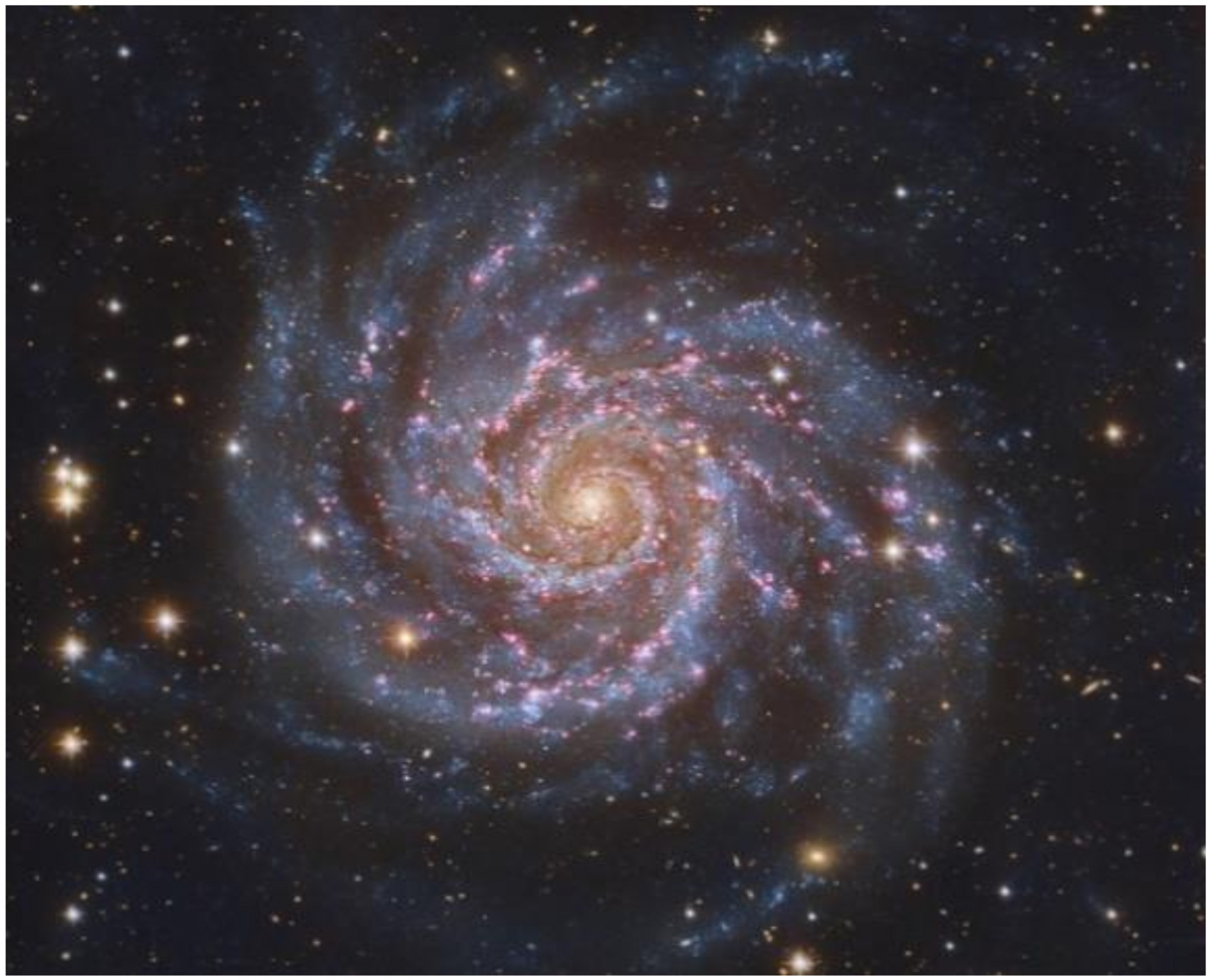Discovering Rare Red Spiral Galaxy Population from Early Universe with the James Webb Space Telescope
Tue, Dec 13, 2022-
Tags
Discovering Rare Red Spiral Galaxy Population from Early Universe with the James Webb Space Telescope
The first image of NASA’s James Webb Space Telescope reveals a detailed morphology of highly redshifted spiral galaxies
Morphology of galaxies contain important information about the process of galaxy formation and evolution. With its state-of-the-art resolution, NASA’s James Webb Space Telescope has now captured several red spiral galaxies in its first image at an unprecedented resolution. Researchers from Waseda University have now analyzed these galaxies, revealing that these are among the furthest known spiral galaxies till date. The analysis further detected a passive red spiral galaxy in the early universe, a surprising discovery.
Spiral galaxies represent one of the most spectacular features in our universe. Among them, spiral galaxies in the distant universe contain significant information about their origin and evolution. However, we have had a limited understanding of these galaxies due to them being too distant to study in detail. “While these galaxies were already detected among the previous observations using NASA’s Hubble Space Telescope and Spitzer Space Telescope, their limited spatial resolution and/or sensitivity did not allow us to study their detailed shapes and properties,” explains Junior Researcher Yoshinobu Fudamoto from Waseda University in Japan, who has been researching galaxies’ evolution.
Now, NASA’s James Webb Space Telescope (JWST) has taken things to the next level. In its very first imaging of the galaxy cluster, SMACS J0723.3-7327, JWST has managed to capture infrared images of a population of red spiral galaxies at an unprecedented resolution, revealing their morphology in detail!
Against this backdrop, in a recent article published in The Astrophysical Journal Letters on 21 October 2022, a team of researchers comprising Junior Researcher Yoshinobu Fudamoto, Prof. Akio K. Inoue, and Dr. Yuma Sugahara from Waseda University, Japan, has revealed surprising insights into these red spiral galaxies. Among the several red spiral galaxies detected, the researchers focused on the two most extremely red galaxies, RS13 and RS14. Using spectral energy distribution (SED) analysis, the researchers measured the distribution of energy over wide wavelength range for these galaxies. The SED analysis revealed that these red spiral galaxies belong to the early universe from a period known as the “cosmic noon” (8-10 billion years ago), which followed the Big Bang and the “cosmic dawn.” Remarkably, these are among the farthest known spiral galaxies till date.
Rare, red spiral galaxies account for only 2% of the galaxies in the local universe. This discovery of red spiral galaxies in the early universe, from the JWST observation covering only an insignificant fraction of space, suggests that such spiral galaxies existed in large numbers in the early universe.

As a remarkable improvement over previous IRAC image (above), JWST’s unprecedented spatial resolution and high IR sensitivity reveals the morphological details of the red spiral galaxies (below) RS13 and RS14. This facilitates a detailed analysis revealing hitherto unknown features of red spiral galaxies belonging to the early universe.
The researchers further discovered that one of the red spiral galaxies, RS14, is a “passive” (not forming stars) spiral galaxy, contrary to the intuitive expectation that galaxies in the early universe would be actively forming stars. This detection of a passive spiral galaxy in the JWST’s limited field of view is particularly surprising, since it suggests that such passive spiral galaxies could also exist in large numbers in the early universe.
Overall, the findings of this study significantly enhances our knowledge about red spiral galaxies, and the universe as a whole. “Our study showed for the first time that passive spiral galaxies could be abundant in the early universe. While this paper is a pilot study about spiral galaxies in the early universe, confirming and expanding upon this study would largely influence our understanding of the formation and evolution of galactic morphologies,” concludes Fudamoto.
Reference
Title of original paper: Red Spiral Galaxies at Cosmic Noon Unveiled in the First JWST Image
DOI: 10.3847/2041-8213/ac982b
Journal: The Astrophysical Journal Letters
Article Publication Date: October 21, 2022
Authors: Yoshinobu Fudamoto1,2, Akio K. Inoue1,3, and Yuma Sugahara1,2
Affiliations:
1Waseda Research Institute for Science and Engineering, Faculty of Science and Engineering, Waseda University
2National Astronomical Observatory of Japan
3Department of Physics, School of Advanced Science and Engineering, Faculty of Science and Engineering, Waseda University















